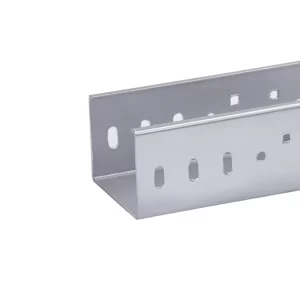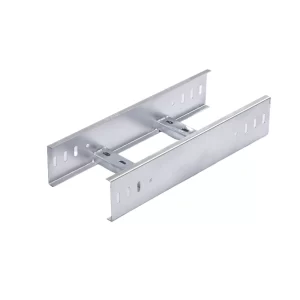Thickness Range
The thickness of a perforated cable tray can vary depending on several factors, including the application, load requirements, and the material used.
Typically, the thickness of perforated cable trays can range from as thin as 1 millimeter to several millimeters. Common thicknesses often fall within the range of 1.2 to 2.5 millimeters.

Load Requirements
The choice of thickness is influenced by the expected load that the tray will need to bear. For instance, in a heavy industrial setting where large and numerous cables will be placed within the tray, a thicker option, such as 2 or 2.5 millimeters, might be selected to ensure sufficient strength and durability. This is crucial to prevent sagging or deformation of the tray under the weight of the cables over time.
Material Considerations
The material of the perforated cable tray also plays a role in determining the appropriate thickness. Steel perforated trays might have different thickness requirements compared to those made of aluminum or fiberglass. Steel trays, for example, may be available in thicknesses like 1.5 to 2 millimeters for standard applications, but could go up to 3 millimeters or more for very demanding conditions.

Environmental Factors
Another factor to consider is the environment in which the cable tray will be installed. If the tray will be exposed to corrosive substances or harsh conditions, a thicker material might be necessary to provide enhanced resistance and longevity.
Let’s say in a coastal area where there is a high salt content in the air, a thicker perforated cable tray made of a corrosion-resistant material would be a better choice to withstand the aggressive environment.
In summary, the thickness of a perforated cable tray is not a one-size-fits-all specification. It is a critical decision that depends on multiple factors to ensure the tray functions effectively and safely, providing reliable cable management for the specific circumstances it is intended for.

